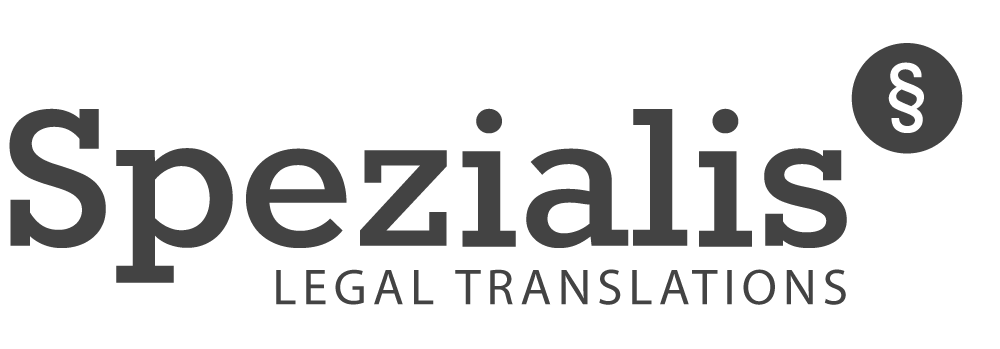Glossary
Feeling a little befuddled by all the translator terminology? This glossary can help you make sense of some of the terms we translators use in our everyday work lives. Click on the terms below for an explanation.
The process by which a text which has already been translated is translated back into the original (source) language.
CAT tool (CAT = computer assisted translation): software which assists humans as part of the translation process. Used correctly, these tools can boost productivity, consistency and accuracy. Popular programmes include SDL Trados Studio, MemoQ and Across.
A segment which has been translated and accepted by the translator in the CAT tool.
A corpus (plural: corpora) is a structured set of translated texts for a certain language combination. Corpora created by human translators are used to “train” machine translation algorithms in order to achieve accurate, high-quality output which is – as far as possible – context appropriate.
An approach to legal translation which is based on an analysis of the properties of a legal concept in the source text (function, scope of application and legal effect). The best translation in the target language is chosen based on the results of that analysis.
Also called “language combination”. The two relevant languages for an individual translation assignment. Translators may translate in one direction (i.e. only English into German) or in both directions (from English into German and from German into English).
A language services provider is an individual or company who/which provides services relating to languages, e.g. translation, editing, localisation, interpreting etc.
Due to historical or cultural differences, a single language may be used differently in different countries or parts of countries where it is spoken (e.g. US and UK English, or Austrian/Swiss German). This can have a significant effect on the translation so it is essential to state which language variant you require for your target audience when ordering the translation.
Language localisation means the process of adapting the translation of a text/piece of content (e.g. a video) to suit the linguistic nuances and market particularities of a specific country or region.
Machine translation (“MT” for short), is a sub-field of computational linguistics that entails using software to translate text/speech from one language to another.
The mother tongue principle is a standard commonly adhered to in the translation industry which demands that translators only translate into their own mother tongue language. The aim to to ensure the highest possible quality of target text.
Neural machine translation (NMT) is a machine translation model that uses an artificial neural network mirroring the human brain to predict the likelihood of a sequence of words. NMTs learn using text corpora but require far less memory space than SMT models.
Plain English is clear, straightforward way of writing, using only as many words as are necessary. Plain English strives to avoid ambiguity, inflated vocabulary and convoluted sentence structures. There are movements to establish plain English rules in legislative & official texts and I endeavour to implement these principles in my translations where appropriate.
The process of revising raw machine translation output to meet the requirements defined for the target text. The revision may take the form of a “light post edit” (correction of factual and grammatical errors as well as any inappropriate terminology) or a “full post edit” (correction of factual, grammatical, terminological and stylistic errors to achieve human parity).
Pre-editing means the preparation of a text/document before entering it into translation software. Pre-editing attempts to anticipate the mistakes typically made by MT software, therefore reducing the post-editing workload.
There is no single, uniform definition of what constitutes a “high quality” translation. Most language service providers will have a set of procedures aiming to ensure the accuracy and quality of translations as well as their suitability for the target audience. These measures could include having the final translation proofread, using spellchecks or integrated quality assurance tools in CAT tools.
A repetition is a segment of the source text that is repeated within that source text to be translated but is not yet saved in the translation memory. Cross file repetitions are segments of a source document which are also present in another source document to be translated.
Machine translation model based on programmed rules that dictate how a word/phrase in the source language should translate into the target language. The RBMT system outputs the best target language word based on morphological, syntactic, and semantic analysis of both the source and the target languages.
A segment is a fragment of source text broken down by a CAT for translation.
The file containing the document(s) to be translated.
The language in which the text/content to be translated is written.
The text/content to be translated.
A measurement commonly used in the translation industry when pricing translation work. What constitutes a standard line may vary from translator to translator or from market to market: Spezialis defines a standard line as 55 characters (including spaces).
Statistical machine translation (SMT) is a machine translation model where translations are produced based on statistical models where the parameters are derived from the analysis of underlying bilingual text corpora. Appropriate translations of source text words are produced based on probabilities.
The language into which a text is to be translated.
The translated text.
An amalgamation of the words “translation” and “creation”; describes the process of adapting a message from one language to another, maintaining its intent, message and style. Less focus is placed on the literal meaning of the source text; the translator takes more of a creative role.
How many words a translator can translate within a certain period of time (e.g. one working day).
A data base which stores sentences, paragraphs or segments of texts which have been translated before to aid translator productivity in the future. If a new sentence is identical or similar to a sentence saved in this database, the software suggests the translation stored in the memory which the translator can then accept or edit as appropriate.
